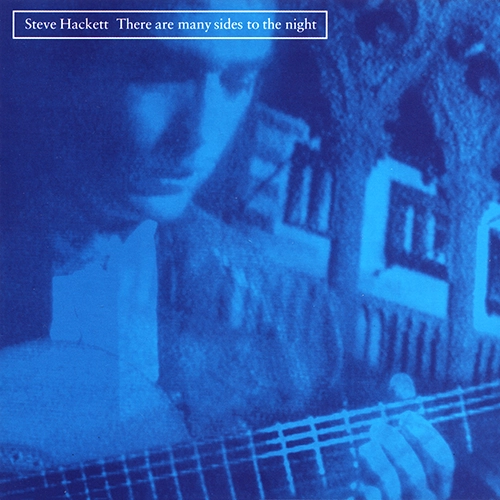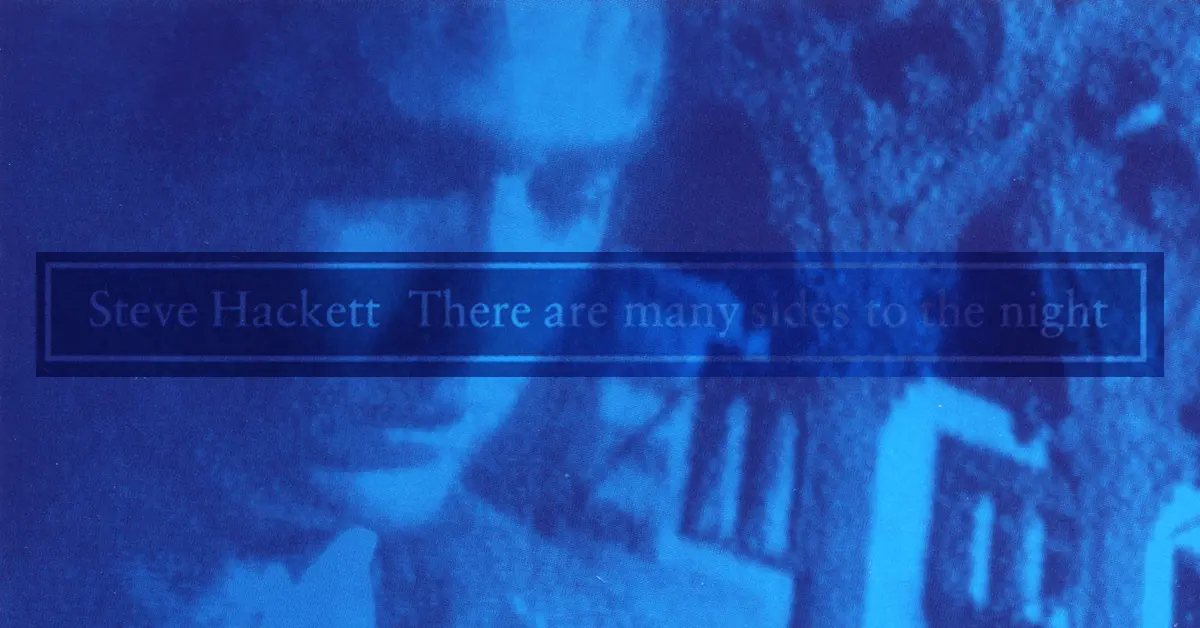- Article
- Read in 5 minutes
Steve Hackett – There Are Many Sides To The Night – review
Steve Hackett has released a live album of one of his acoustic shows in 1995: There Are Many Sides To The Night.
Truly, the night has many faces. This also applies to concerts, which usually take place during the “dark time of day.” Steve Hackett is equally versatile, having experienced various musical directions and style changes in his 25-year career, from progressive rock to pop and rock, and even connections with world music. Blues is also part of his broad spectrum, but especially acoustic music, naturally on his instrument, the guitar.
With Bay Of Kings (1983) and Momentum (1988), Steve created two incomparable albums in this style, which were re-released in 1994, sonically reworked and enriched with some bonus tracks. Also in the past year, Steve gave some concerts designed for acoustic presentation. For a large part of the program, he was accompanied by Julian Colbeck on keyboards, while he himself transformed acoustic guitars into “small orchestras” and sporadically demonstrated his singing skills and harmonica abilities.
In the summer and autumn, only a few gigs took place, mainly at festivals. The seven concerts in Italy in November and December 1994, however, were already a smaller tour. Due to many fans’ requests for live material, it was decided at short notice before the Italy tour to record the concerts, to preempt the “bootleggers” and release an album themselves. It was to be structured entirely in the style of a bootleg, with as much of a complete show as possible, including announcements and without empty spaces between songs, but in a much better sound quality than the often mediocre audience recordings of illegal recordings.
Steve’s manager, Billy Budis, sees the album more as a kind of fan club edition rather than an official release, as the CD is mainly to be distributed through the various Genesis fan clubs and directly from Kudos Music. The CD will be released in early June by Kudos Music (catalog number: Kudos CD 2) in England, bears the title “There Are Many Sides To The Night” and is the second live album in Steve’s solo career.

In advance, we received a recording of the album on tape and can therefore report on it in this issue. The recording was made during Steve’s concert on December 1, 1994, in Palermo, Italy. All songs from the complete concert were used for the album, except for “Jazz On A Summer’s Night” and the only piece where Steve sang, “There Are Many Sides To The Night” (somewhat ironic in connection with the album title!). The absence of these songs is explained by technical problems during the recording of “There Are Many Sides…” and, of course, by the limited capacity of a CD.
After processing the recordings, removing unnecessary applause, shortening Steve’s announcements, and chaining all pieces together, a total playing time of 77 minutes for the CD was created. The sound quality is very good, and the album itself well reflects the general atmosphere of the performances.
Track Listing and Performance Details
The CD begins with a few seconds of expectant silence, which is immediately ended by the Hackett old acoustic classic from 1972, Horizons. The live version presented is more like the studio version from the Foxtrot album than the one from the Bay Of Kings album of 1983. However, there are more Genesis “allusions” to follow.
Two approximately ten-second sequences of Cuckoo Cocoon and Blood On The Rooftops lead into a short version of Steve’s solo piece Black Light. Skye Boat Song and Time Lapse At Milton Keynes, released last year as part of the bonus tracks on Steve’s acoustic albums for the first time (or for the first time on CD), follow.
Steve announces a new piece called Beja Flor with an explanation of the title. Beja Flor is the Portuguese name for the hummingbird that lives in Brazil and “kisses the flowers.” Until now, Steve was heard alone on the guitar, but now Julian Colbeck joins in, and the first song played together is Steve’s obvious “love song” to his wife: Kim. Unlike the studio version, the flute part is played by Steve on the guitar and the original guitar part is taken over by Julian on the “piano”.
The following Second Chance also comes in a re-instrumented version. Instead of the flute, Julian uses a xylophone-like keyboard sound. This makes the piece sound somehow colder. It is also twice as long, as a new, somewhat improvised middle section has been added to the song.
Steve reacts humorously to calls from the audience demanding old Genesis pieces. Five seconds from Dancing With The Moonlit Knight at least satisfy the question of whether he still masters this riff.
The next piece is again an example of the transformation a song undergoes at an acoustic concert. Oh, How I Love You was once recorded with a full band and Chris Thompson as the singer for the Feedback album, but has not yet been released in this version. The instrumental live version naturally leans on it but is somewhat longer. Steve replaces the vocal part with his guitar playing. In comparison of both versions, neither is better or worse – they are simply fundamentally different.
With The Journey, another piece from the Bay Of Kings album joins the concert, followed by something Steve describes as a “joke” between Julian and him. It is a piece that was already recorded a few years ago with the working title “Baroque” and was also announced as such at the concerts. As the title suggests, it is a very fast, partly baroque-sounding piano and guitar number with a long improvised/jammed middle section. For this CD, the song has now received the final title Bacchus.
Once again, Steve responds to calls, this time probably demanding early solo pieces, by playing a few notes from Two Vamps As Guests and Everyday. Walking Away From Rainbows from the Guitar Noir album follows, followed by the only excursion of this concert to the Momentum LP, Cavalcanti. The piece leads directly into Andante in C, better known under the name Tales Of The Riverbank, which first appeared in 1981 on the B-side of the single Hope I Don’t Wake and was re-released last year as a bonus track of Bay Of Kings.
With the Concerto in D (Largo) by Antonio Vivaldi, an excursion into baroque music follows, which in this case, however, does not sound very different from Steve’s own acoustic works. The only “current” song of the evening is A Blue Part Of Town from Steve’s blues album Blues With A Feeling released in 1994. It is also the only piece where Steve exchanges the guitar for a harmonica.
The last song of the regular set is an acoustic version of Ace Of Wands, which is included on Steve’s first solo album Voyage Of The Acolyte from 1975. As with Oh, How I Love You, the live and studio versions are difficult to compare here. The studio recording is also instrumental, but played with a complete band (including electric guitar, bass, and drums). Nevertheless, the “lean version” convinces one hundred percent. Julian, who plays the original guitar part on the “piano,” and Steve are bursting with joy of playing, which ends in a final uproar of the instruments.
After long applause, the two return to the stage. Again, Steve “plays” around with a few Genesis snippets. Unquiet Slumbers For The Sleepers..., Cuckoo Cocoon, and Blood On The Rooftops are played just long enough to recognize which song the fragment comes from. The following piece, written by Ennio Morricone, comes from the film Cinema Paradiso. A “string carpet,” reproduced by Julian on the keyboard, underlays Steve’s calm guitar sounds. Once again, a long applause sequence follows before Steve (as at the beginning of the show without accompaniment from Julian) ends the concert and thus also the CD. End Of Day is the name of this very quiet, previously unreleased guitar piece, which represents a very good conclusion to this extremely successful concert and the resulting beautiful CD.
Author: Helmut Janisch
first published in German in it-Magazin #15, June 1995

